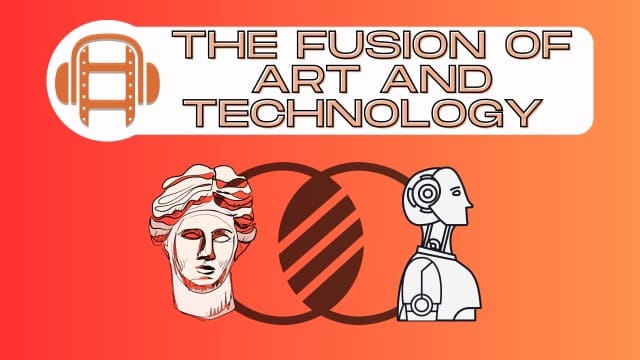In the long history of “artists”, humans have consistently been fascinated with the idea of revolutionizing art, taking what existed before and building off their predecessors. A lot of improvements in early art had to do with technique, like artists mastering the concepts of depth and the golden ratio based on their peer’s or mentor’s improvements. Early “technology” so to say, was the improvement of rudimentary paint brushes, stone working tools, and so on.
Starting from the very beginning, archeology shows that simple drawings were used as an early form of written language, and those drawings were the earliest basis for all art we see today. In prehistoric times, simple dolls were designed from stone and wood for children, carving a path for future sculptors and woodworkers.
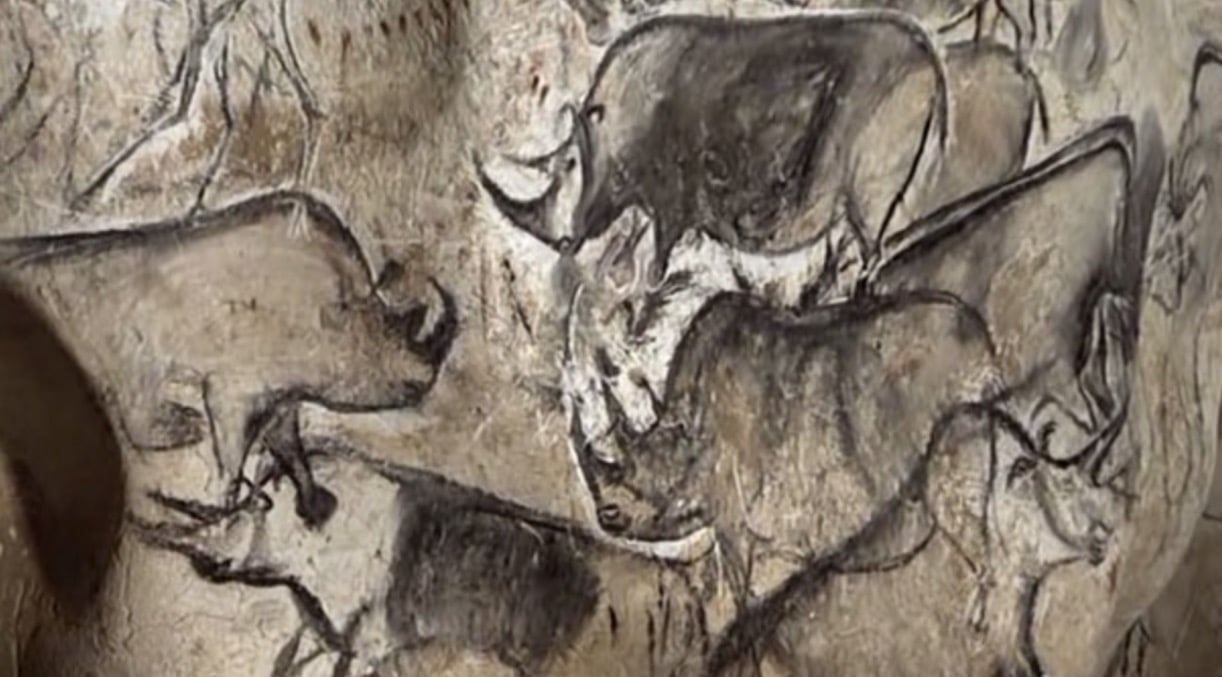
An example of early cave drawings, depicting a Rhinoceros
From these beginnings, art forms have grown into an industry that affects most lives in some way daily. All the building blocks of modern art can be traced all the way back to these early examples; to think about the drastic improvement in art skills and tools that can be tracked through human history is staggering, let alone thinking of how technology has progressed art in more modern times.
Early in the days of classical art, during what some would call the “Artisan Era”, religion was a driving force in the improvement of the craft, from painting to sculpting, woodworking and so on. Religion’s use of art became a driving factor in the creation of a job title “artist”, which believe it or not, didn’t always exist. The desire to show off chapel patron’s wealth and power made way for the future, where being an artist would become viable work.
Looking so far back, it’s a shock that when Leonardo DaVinci was contracted to complete his legendary paintings for churches, he wasn’t even viewed as an “artist”. At that time, “artist” wasn’t a job title; though his and other’s work that has lasted the test of time would change that for the rest of history, starting in the late 1400’s. Changes in how people viewed and interacted with art paved the path to today’s view of art as entertainment, influencing our daily lives.
Modern Improvements in Technology and Art
Classical art had major technique progressions over its early years, but no major technological improvements until more modernly, especially with the inception of photography, videography, and modern tech. With that said, early “camera” techniques benefited even the earliest artists, with “camera obscura” a concept used all the way back to Aristotle. Artists would project an image through a small hole onto a larger surface, some early artists using this to trace and enhance their paintings, making them more realistic and improving their craft. This is a prime example of how even basic technology and concepts influenced art from early on.
Over the last 100 years, technology has acted as a powerful bridge between traditional art forms and modern innovations. The influence of technology on art has been transformative, leading to the amalgamation of previously separate mediums.
Every Frame a Painting
One of the earliest major influences of modern technology on art was the invention of the camera. From still frame photography, to what that technology grew into, this technological advancement led to a massive shift in how art is viewed as entertainment. Looking at previous art forms, one can trace the building blocks mentioned in the introduction, as there are many similarities between the framing of an aesthetically pleasing photograph and the composition of a masterful, classic painting.
Building off of still frame photography, which isn’t too far off in composition theory from painting, is the “moving picture”, or video. Many of the same composition concepts of composition bleed into film as well, like the rule of thirds, the golden ratio, and how to create a sense of depth.
We can look back at historical paintings and see frames from movies that are clearly directly referencing still paintings, renowned photographers and movie makers masterfully utilizing classical art composition in modern masterpieces.
Stanley Kubrick is well known for his painstaking efforts to make every frame of his films “perfect”, often very symmetrical, and that “perfection” he was painstakingly trying to achieve was based on years of classical art that preceded photography and film art. Akira Kurosawa is another filmmaker known for framing his films based on classic paintings. There truly are too many examples to list, as film media has so tightly integrated itself with its art predecessor, photography, and moreover, classical painting.
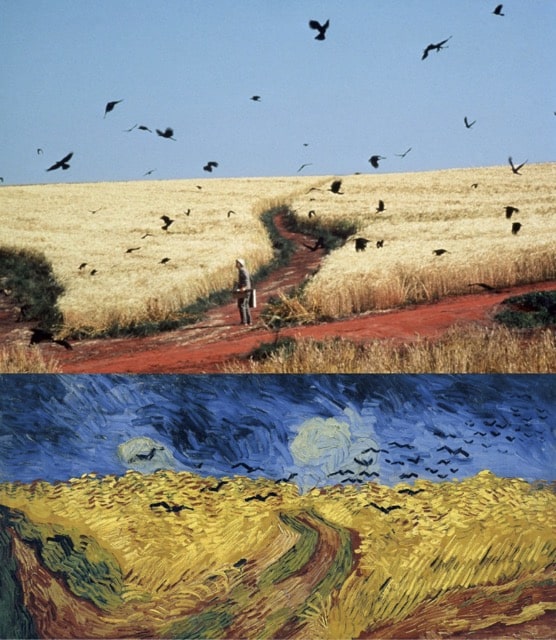
Dreams (1990), Akira Kurosawa (Top)
Wheat Field With Crows (1890), Vincent Van Gogh (Bottom)
Digital “Painting” – A New Canvas
With the advent of powerful graphic tablets, high-resolution displays, and sophisticated software like Adobe Photoshop, Procreate, and Corel Painter, artists can create stunning works of art directly on their digital canvas, at home and on the go. Art has become drastically more accessible with modern technology, as a hobby or a career. Working on tablets or on PC programs with drawing pads has opened up a wide world of graphic design, which is a kingpin of the tech and classical art combination.
The digital medium allows for endless experimentation, undoing mistakes quickly, and trying out endless techniques with ease. Artists can work with a wide range of tools, textures, and colors, blurring the lines between traditional and digital art, all from one tablet and with one pen. Not only does digital art mean less space and money spent on art supplies, but it opens the door to art to so many, starting as young as children.
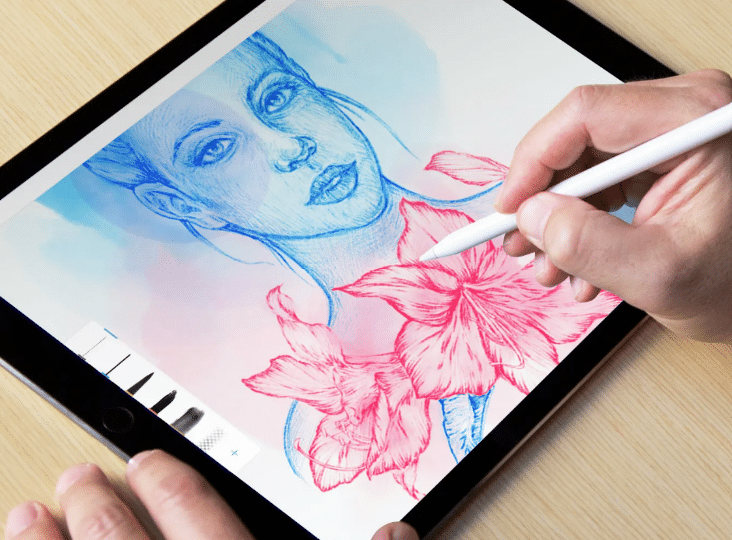
Access to graphic design and even animation opportunities are abundant now versus just a decade ago with the newest technology on the market. The US Bureau of Labor Statistics reports 265,000 graphic design jobs in the US alone in 2021. There are also around 24,800 projected graphic designer job openings in the US every year.
While technology is making it easier to find work as an artist in some ways, with a more crowded market, it is integral that artists master their style and digital craft. Education like MTI’s animation and visual effects program offer degrees focused on the mesh between design and technology, educating students so they can do the most with their artistic talents in the modern art environment.
3D Printing: Sculpting in the Digital Age
Traditional art and sculpture has historically been characterized by craftsmanship, involving hours of meticulous handiwork. However the introduction of 3D printing has disrupted painstaking tradition by enabling artists to bring their visions to life with incredible precision and detail.
Sculptors, designers, and creators can design intricate 3D models and then use 3D printers to produce physical copies of their work. One of the most compelling aspects of 3D printing is its increasing accessibility; 2hat was once a technology primarily reserved for industrial use has now found its way into the homes of artists, hobbyists, and makers worldwide. As 3D printing becomes more accessible, its influence extends far beyond art, encompassing fields like healthcare, aerospace, and manufacturing; further bridging technology and art in the modern day.
AI and Art: A Creative Partnership with Complications
Artificial intelligence has become a widely used tool in the art community. AI algorithms can generate art and assist in design. For example, artists can employ AI to generate new ideas, create variations of their work, or infuse their art, photography or video with unique patterns and styles.
There is rising concern for some digital artists though, as some people will post AI generated art, which took only moments to create and get thousands of interactions, while their own intricate works that took weeks to finish will be overlooked.
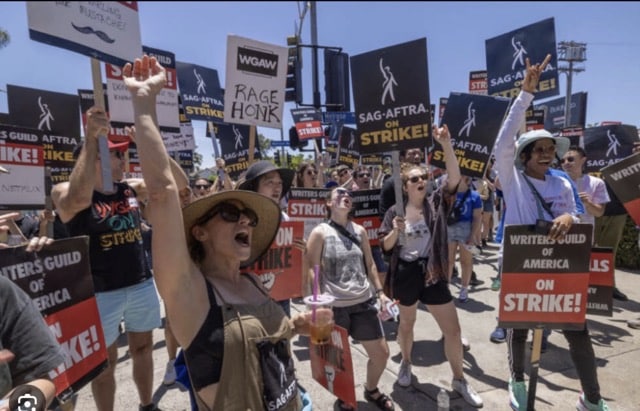
In fact, a large basis for the recently ended strikes in Hollywood was a concern about AI threatening the efficacy of the work actors, writers, and other artists in Hollywood produce. Artists worry that they will be replaced by AI capabilities, and seek to be protected from the copyright issues they feel AI infringe upon.
Digital Collaboration and Crowdsourcing
Technology has brought artists together like never before. Prior to the internet, creators, like independent movie makers as an example, had to either be signed by a production company to have their film made, or figure it out themselves. For example, Kevin Smith, the creator of “Clerks” had to take out many lines of credit to self-fund his cult classic film. Now, many online sources exist to crowdfund artistic endeavors, like “Kickstarter” and “Indiegogo” to name a couple.
To sum up, the fusion of technology and art throughout recent history has led to some amazing results. Photography and film, digital painting, 3D printing, and AI are transforming traditional art forms and enabling artists to push the boundaries of what is possible. MediaTech University is excited to watch as technology continues to evolve with art, incorporating these shifts in art into our curriculums so our students can graduate ready to pursue their artistic and technical endeavors.
Take a tour
Are you ready to turn your PASSION into a PROFESSION? Daily tours are available from 10am-5pm and we welcome walk-ins. Each tour will last approximately 45 minutes.
If you’d like to book a tour in advance, you can book by calling the campus directly or by using the scheduling buttons to book online and choose a time that works best for you.

